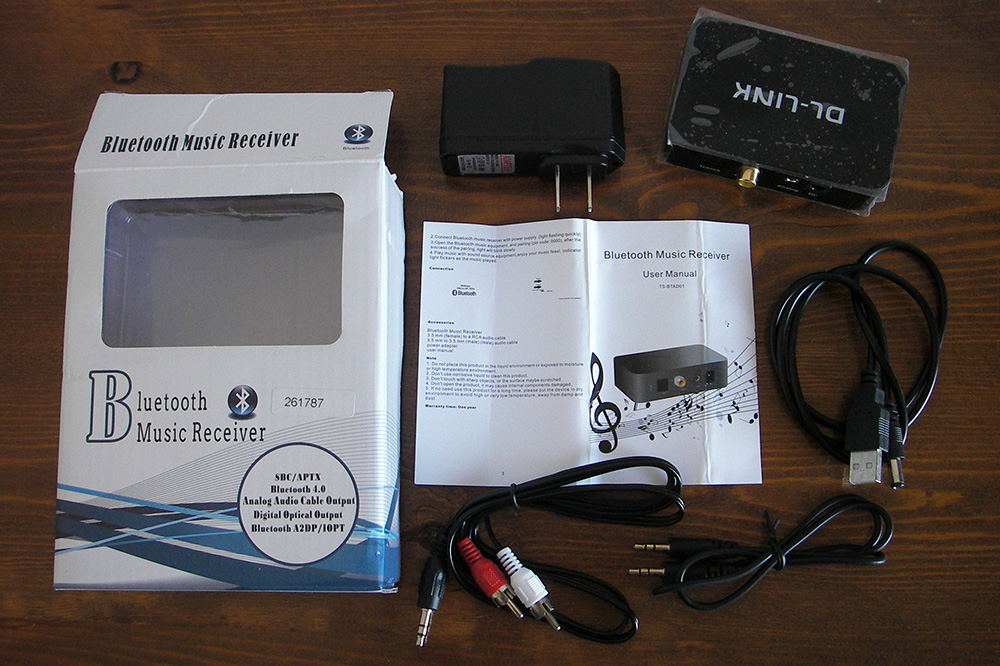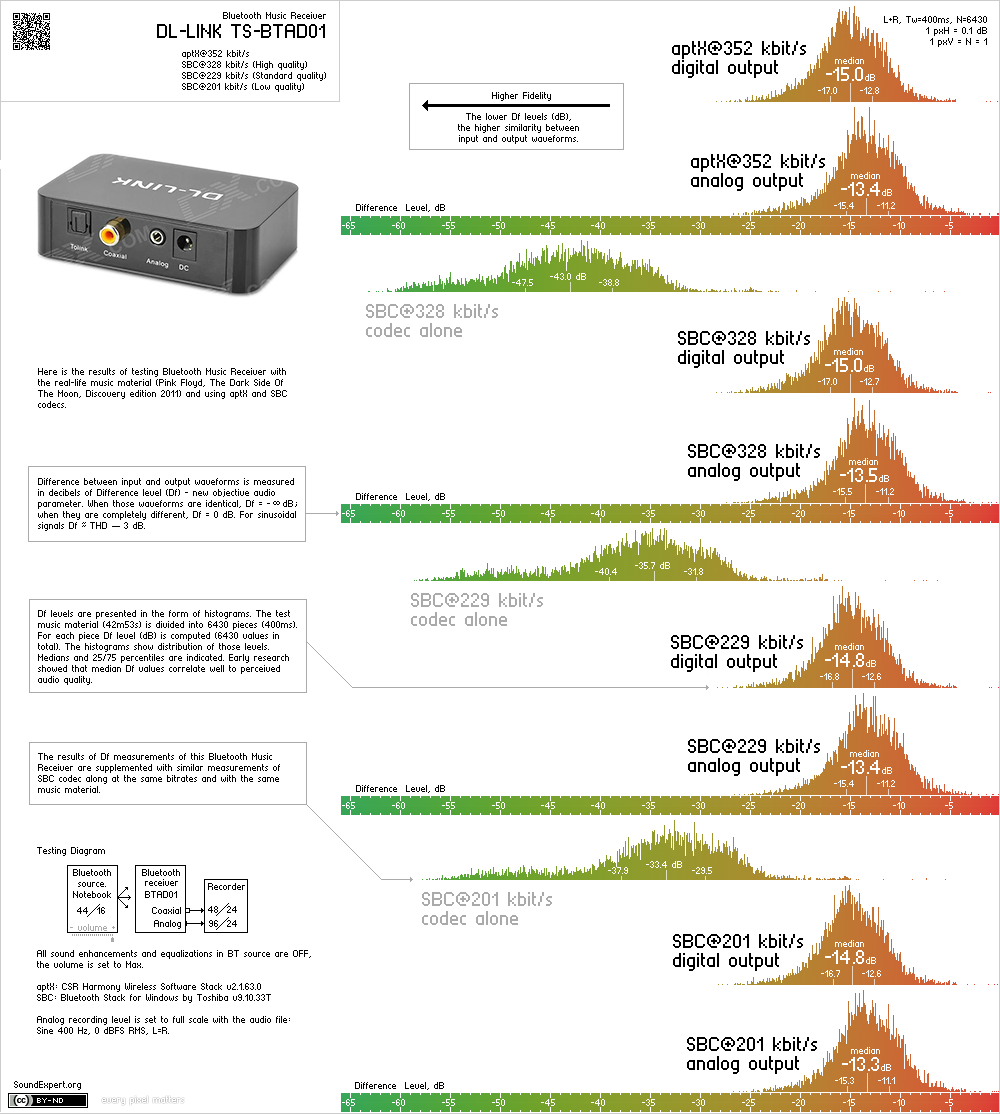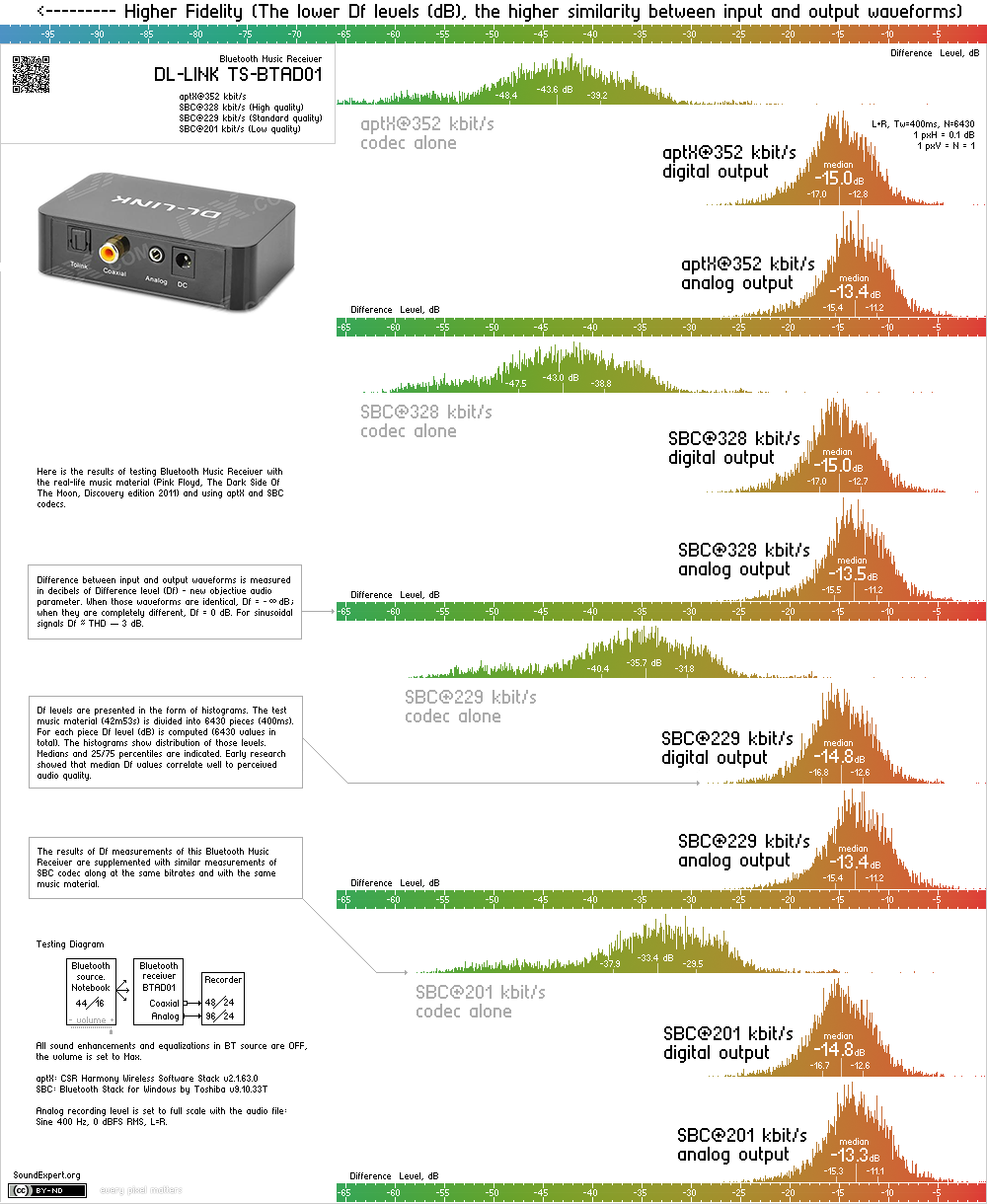Published Date 7/11/17 2:46 PM
Initially this device was planned to be used for aptX testing/research. Two guys responded to the call for donations in the article Audio quality of bluetooth aptX and after some time Bluetooth Music Receiver TS-BTAD01 was delivered from DealeXtreme.

Figure 1. Bluetooth Music Receiver package contents.
The plan was to use digital out of the receiver to record bit-perfect output of aptX decoder. Such recordings could be used for analysis/comparison of aptX and SBC codecs.
Unfortunately the quality of output interfaces of the device both digital and analog is so extremely low that the mission is impossible. The main problem with its S/PDIF out is low quality resampling to 48 kHz using very unstable clock. Even more, according to the measurements below the signal is converted twice. First, decoded aptX/SBC stream is converted to analog and then converted to digital again @48kHz using low-cost IC solution. Needless to say that such processing distorts the signal much more than the codecs alone, making this device unusable for aptX research.
Nevertheless, I performed standard SE objective measurements of the device using real-life music material and comparing input and output waveforms. Results are below.

Figure 2. Df measurements of TS-BTAD01 with real music material.
As you can see the difference between aptX and SBC codecs (and three quality modes for the latter) is almost completely eliminated by the awkward design of output circuitry. Resulting sound is harsh and leads to listening fatigue in minutes. Exactly such Bluetooth devices make bad reputation for Bluetooth audio as a technology.
Manufacturing of this audio crap is possible not least because usual THD+N measurements look good even for such devices. The enclosed leaflet for TS-BTAD01 proudly specifies THD = 0.05% (-66 dB). Indeed, if we look at Df measurements with pure Sine signal instead of real music signal we can see that the above THD value is quite correct. Even the difference between codecs and digital out is not so dramatic.
Table 1. Df measurements of TS-BTAD01 with Sine signal
(1kHz, -10dBFS, 30s, L=R). Df (dB) ≈ THD - 3 (dB) | | Codec alone | Digital out | Analog out |
| aptX@352 kbit/s | |  |  |
| SBC@328 kbit/s |  |  |  |
| SBC@229 kbit/s |  |  |  |
| SBC@201 kbit/s |  |  |  |
The problem with THD measurements is that degradation of pure Sine wave is always substantially less than of real music signal. In other words, an awfully sounding device can still have decent THD measurements.
Anyway, Bluetooth Music Receiver TS-BTAD01
- has nice plastic case with blue LED and various outputs,
- easily pairs with any SBC/aptX Bluetooth devices,
- is worldwide available on-line for $30 (under various names and brands) and
- is suitable for playing quiet background music in your garden.
There is no way to use it for attentive/critical listening.
Thank you, Pierre and Alexey for your donations and sorry for not completing the mission – to compare SBC and aptX codecs. I will do this in some other way.
Update
2018 August
Starting from version 4.0 A/V processor ffmpeg has encoding/decoding capabilities for aptX and aptX HD formats. Both codecs have been added to SE blind testing engine. Results can be found on Encoders 320+ kbit/s page. Technical details of these codecs performance are in the article - Audio quality of Bluetooth aptX and aptX HD.
Below are updated Figure 2 and Table 1. They were supplemented with objective measurements of aptX codec. This update doesn't change logic of the article and conclusions made.

Figure 2 (updated). Histogram of aptX codec was added.
Table 1 (updated). Diffrogram of aptX codec was added. | | Codec alone | Digital out | Analog out |
| aptX@352 kbit/s |  |  |  |
| SBC@328 kbit/s |  |  |  |
| SBC@229 kbit/s |  |  |  |
| SBC@201 kbit/s |  |  |  |